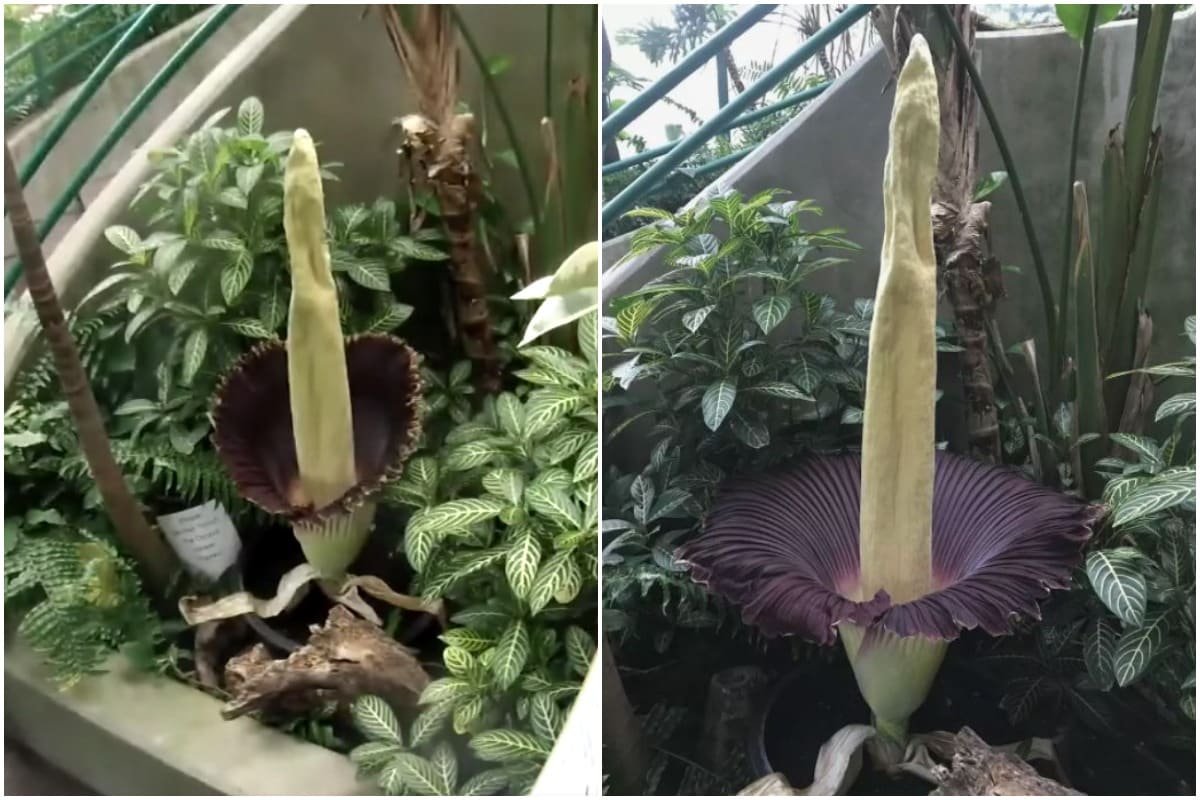Amprophophallus titanium blooms with clusters of flowers that can reach 10 feet 3 m in height but these petals smell so much like rotting flesh that the plant is known as the corpse flower

Amprophophallus Titanium: The Fascinating Corpse Flower
Introduction:
- Have you ever heard of a flower that smells like rotting flesh? Welcome to the intriguing world of Amprophophallus titanium, commonly known as the corpse flower.
- This captivating plant boasts clusters of flowers that can reach a towering height of 10 feet (3 m). Its distinctive petals emit an odor so pungent that it earned the plant its macabre nickname.
Origin and Habitat:
- The corpse flower is endemic to the rainforests of Sumatra, Indonesia. Its rare and enigmatic nature has captivated people worldwide.
- This giant flower thrives in tropical regions, where the high humidity and warm temperatures mimic its natural habitat. Botanical garden enthusiasts and plant collectors eagerly cultivate these unique spectacles, providing opportunities for the public to experience their unusual beauty.
Blooming Process:
- The blooming process of the corpse flower is as remarkable as its appearance. It takes approximately seven to ten years for the plant to reach maturity and produce its first bloom.
- When ready to bloom, the plant sends up a single gigantic spadix, in some cases exceeding the height of an average human. Surrounding the spadix is a large, petal-like structure known as the spathe. Both the spadix and spathe play a vital role in the flower’s reproduction process.
- The spathe opens gradually, revealing an astonishing display of deep maroon colors, contrasting beautifully against the vibrant green foliage. This captivating sight draws in curious onlookers to witness the extraordinary event.
The Unforgettable Stench:
- A distinctive feature of the corpse flower is its repugnant smell, which strikingly resembles rotting flesh. This pungent odor serves a unique purpose - attracting pollinators.
- The foul scent emitted by the corpse flower is reminiscent of decaying organic matter, luring carrion beetles and flies. These insects mistakenly identify the plant as a suitable location for laying eggs, which aids in pollination.
- Interestingly, the smell is most potent during the first night of blooming and gradually diminishes over time. The combination of the putrid aroma and imposing size makes the corpse flower a botanical marvel that cannot be easily ignored.

Scientific Significance:
- Beyond its captivating appearance and odor, the corpse flower conveys immense scientific importance. Its evolutionary adaptations, particularly the distinct odor, have fascinated researchers for years.
- Scientists believe that the corpse flower developed its foul-smelling scent as a mechanism to attract specific pollinators, ensuring successful fertilization.
- The discovery and understanding of these unique adaptations can help unlock secrets about plant evolution and contribute to conservation efforts in the rainforests where the corpse flower is found.
Conclusion:
- The Amprophophallus titanium, or corpse flower, stands as a testament to the wonders of nature. Its magnificent size, captivating appearance, and foul-smelling petals create an unforgettable and surreal experience for those fortunate enough to witness it.
- Whether you’re an avid botanist, nature enthusiast, or simply someone intrigued by the extraordinary, encountering the corpse flower is a sensory adventure that highlights the limitless diversity of the natural world.
Source: Live Science - 25 Fun Facts About Flowers
Tags
Share
Related Posts
Australia has pink and purple lakes
February 02, 2024
2 min
Acacia trees can warn each other of danger
February 02, 2024
2 min
Quick Links
Legal Stuff


